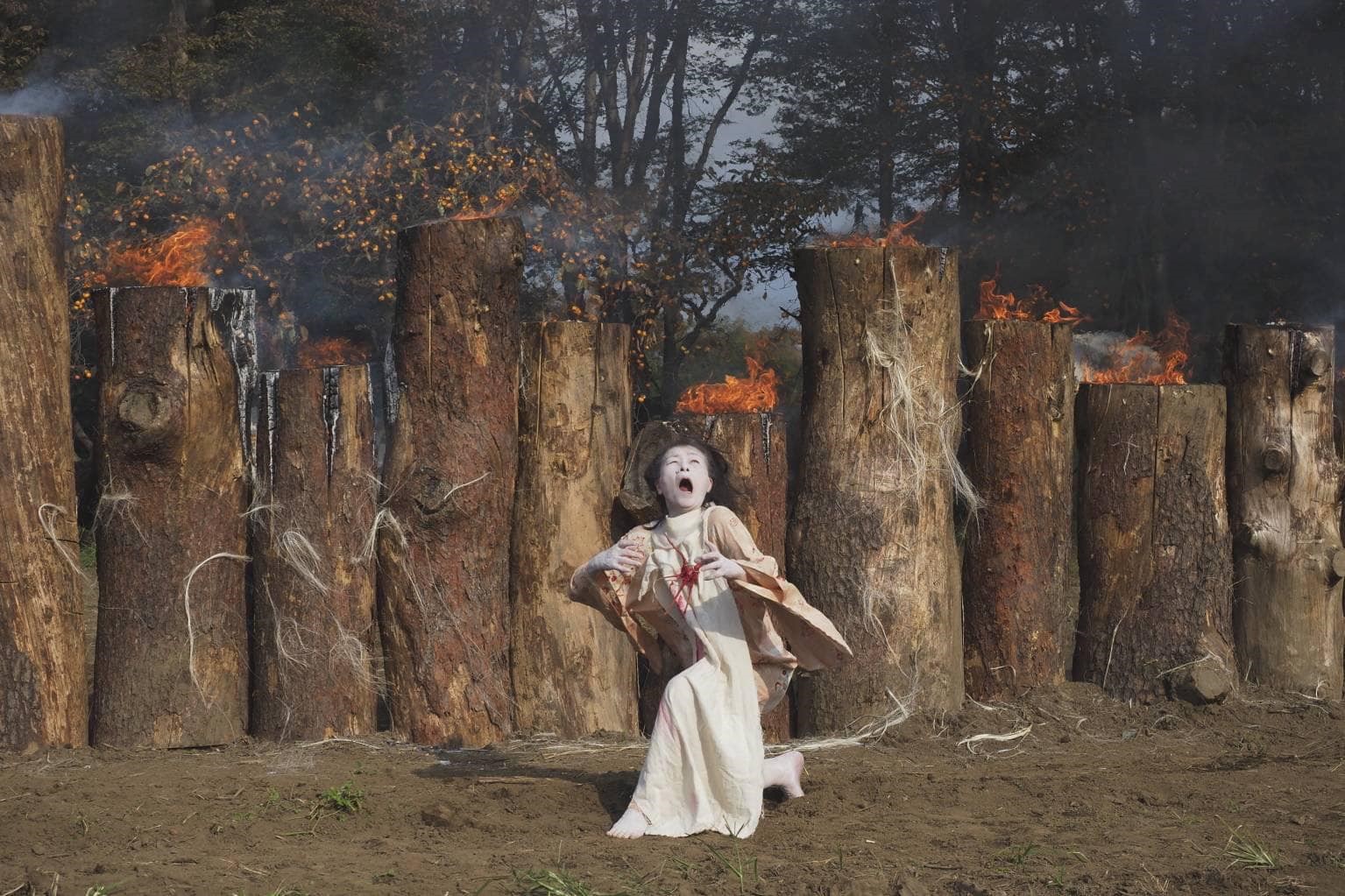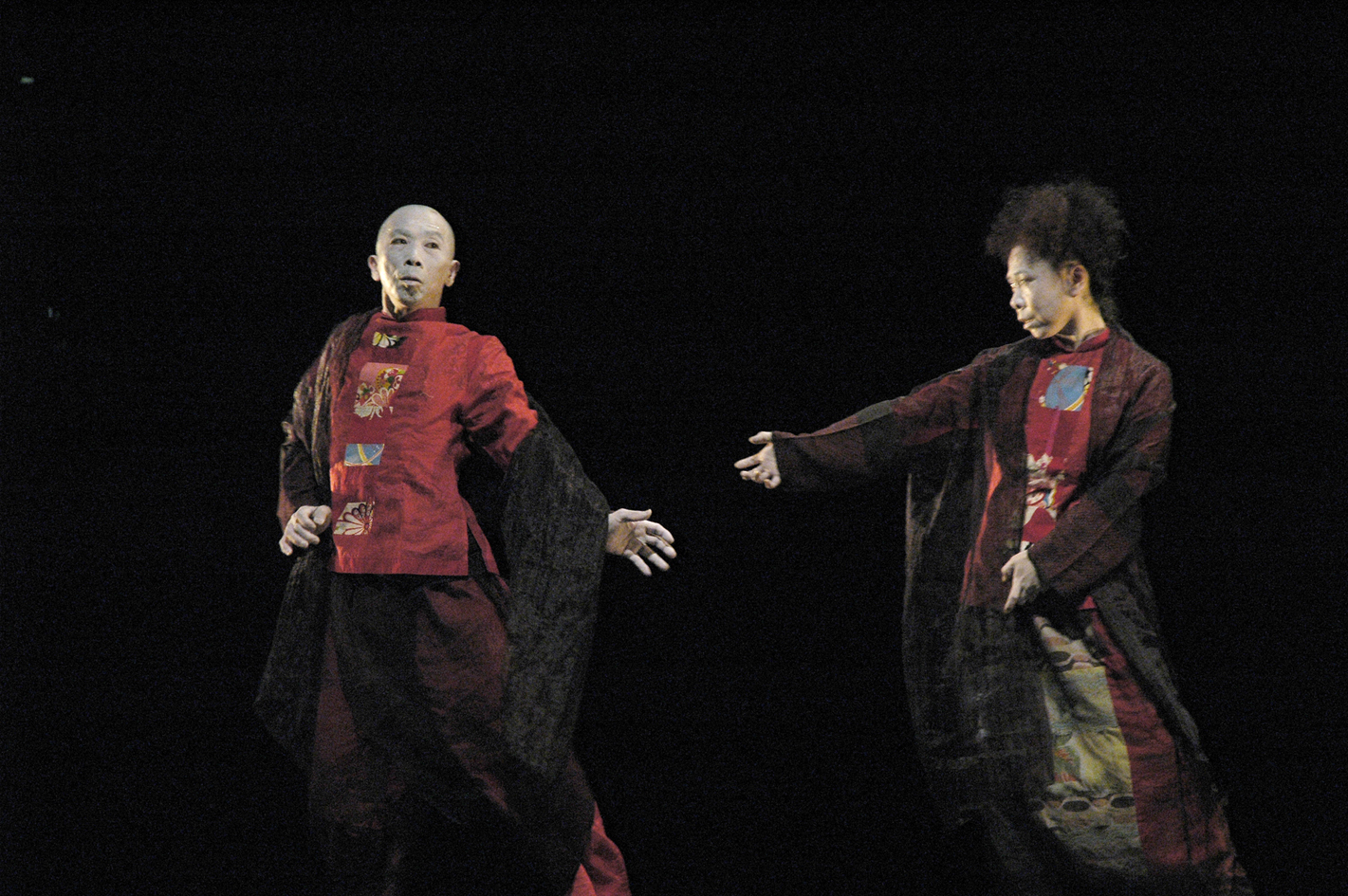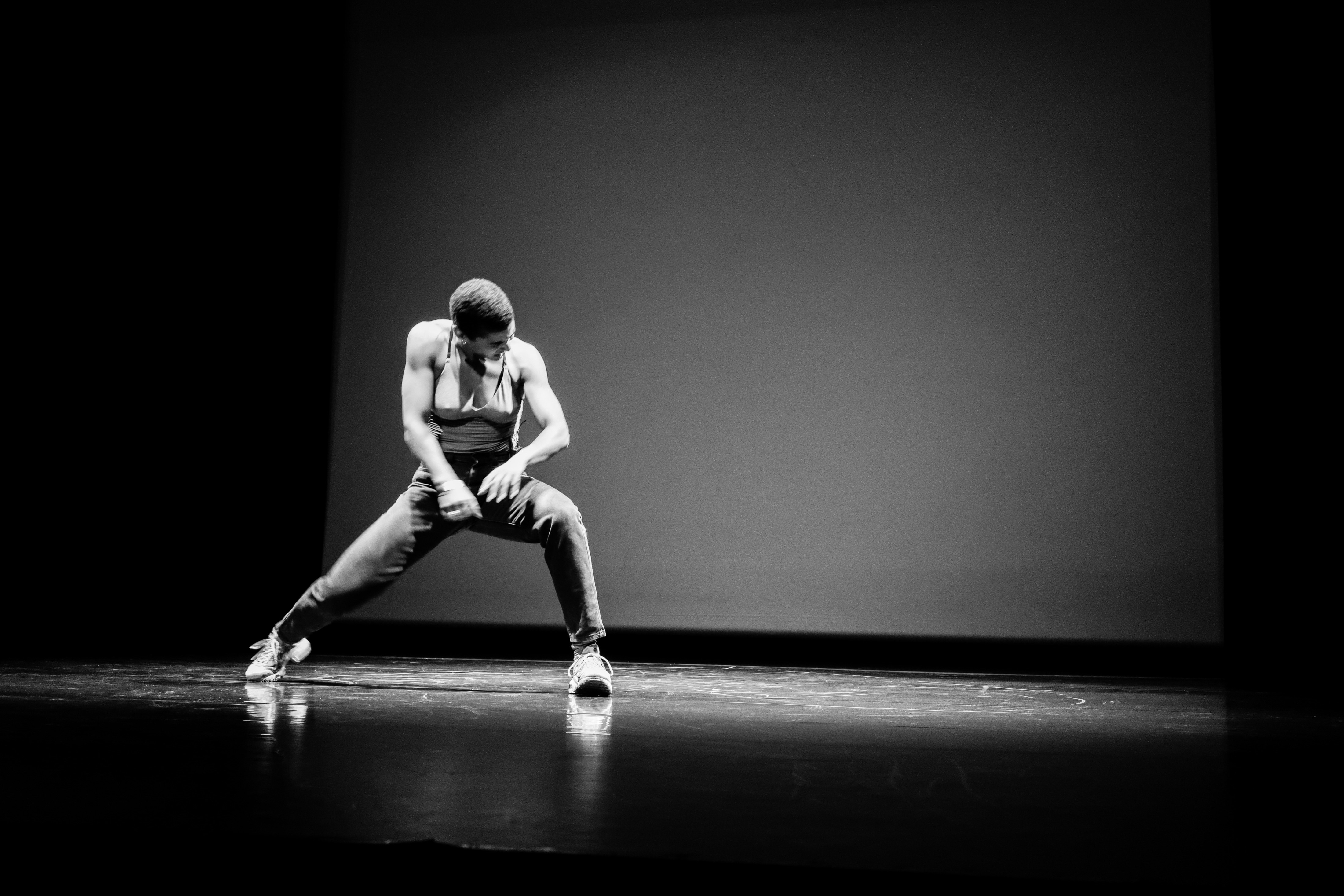Butoh Scores
Oct. 28–29 - Workshops with Moe Yamamoto and Kei Shirasaka
(Application only)
Oct. 30–31 - Workshops with Saga Kobayashi
(Application only)
Nov. 1–2 - Screenings and performance lectures with Saga Kobayashi, Moe Yamamoto and Kei Shirasaka, Takashi Morishita, Kae Ishimoto, and Rosa van Hensbergen
(Free and open to the public)
Join us for a unique opportunity to journey back nearly half a century into the world of Tatsumi Hijikata’s butoh choreography.
Over the course of four days of intensive workshops, we will rediscover choreographic phrases from works of the late 1970s with dancers who originally performed in them, Saga Kobayashi and Moe Yamamoto. Through a combination of rare video recordings, dancers’ notebooks from the time, and the embodied memories of Kobayashi and Yamamoto, we will go behind the scenes of Hijikata’s choreographic creation. Workshops will be limited to 20 participants and free of charge. Applications will be accepted until September 20.
The workshops will be followed by a two-day symposium of screenings and performance lectures, open to all, which will offer a rare opportunity to discover the workings of Hijikata’s choreographic method through the guidance of artists who performed in his works. We will be joined by Saga Kobayashi, Moe Yamamoto and Kei Shirasaka of Kanazawa Butoh Kan, alongside longtime archivist and producer of Hijikata’s works, Takashi Morishita, and current archivist Kae Ishimoto. Our aim across these two days will be to reveal the relationship between video recordings of Hijikata’s dance from the late 1970s and the language he used to choreograph them, drawing on the private notational archives of Kobayashi and Yamamoto along with archival documents from the Hijikata Archive at Keio University. Several of the archival films we will be showing will be screened outside of Japan for the first time. The symposium events are open to all and free of charge.
The two-day symposium will end with a performance lecture by French choreographer Anne-Marie Van – aka Nach, Nulle part est un endroit (further description below), followed by a reception hosted at Henry R. Luce Hall. Nulle part est un endroit traces Nach’s own journey from the world of krump through her discovery of butoh dance and other styles, including flamenco and kathakali. Nach will open up the histories of butoh we will have traced over the preceding two days towards new entanglements and horizons, gesturing to the kinds of futures we hope our work with historic notational documents can make possible. This performance lecture and following reception will be open to all and free of charge.
Costume in Front (Shōmen no ishō, 1976) was choreographed by Hijikata for Moe Yamamoto as principal dancer. It was one of the later serial performances (renzoku kōen), which Hijikata had been creating since 1974. These performances allowed for the intensive development of his notational language. Unusually, we have notation for both the solo sections by Yamamoto and extant notation for the chorus recorded by Yukio Waguri making it possible to examine the works choreographic structure in detail. A bilingual publication of Yamamoto’s rehearsal notes for this work was published by Ugly Duckling Press in 2015.
First Flower (Saisho no hana, 1978) was choreographed by Hijikata for Momoko Nimura as principal dancer. Nimura, along with Yōko Ashikawa and Saga Kobayashi, was one of the main dancers to perform in his major works from the early 1970s onwards. The piece contains solo sections for Nimura as well as duet scenes with Moe Yamamoto, for which Yamamoto kept a detailed notational record. Yamamoto will be drawing on this record, along with his notation for Costume in Front and other works, in his performance lecture between screenings.
Human Shape (Hitogata, 1976) was one of Hijikata’s final serial performances (renzoku kōen) choreographed by Hijikata with his lead dancer Yōko Ashikawa as principal. This performance, along with Lady on a Whale String (Geisenjō no okugata, 1976) are often considered to represent the culmination of his choreographic work using notation. Along with other works from the serial performances, their choreography was part of the first international staging of Hijikata’s work abroad, at the Paris Festival d’Automne MA: Espace-temps au Japon in 1978.
Bitter Light (Nigai hikari, 1977) was choreographed by Hijikata for Saga Kobayashi as principal dancer. Kobayashi had worked with Hijikata intensively from the late 1960s to mid-1970s in the formative years of his work with notation. She returned to work with him for this performance, for which she meticulously recorded the rehearsals and final choreography in two notebooks. Kobayashi will be drawing on these historical documents in her performance lecture prior to the screening.
These archival screenings are made possible through the collaboration of the Tatsumi Hijikata Archive and the Video Information Center (VIC) Collection (supported by the Agency for Cultural Affairs in Japan Support Program to Promote Archives of Media Arts 2024: Digitizing and Cataloging of Performance and Exhibition Video Records from the post-1970s II), both housed by Keio University Art Center. VIC (1972–) is a movement that recorded various events to produce experimental TV broadcasts such as the 1977-78 “Cable Paravision-ten” CATV broadcast. The six founding members and representatives were Yusuke Ito, Yasuhiko Suga, Takashi Noyama, Makoto Naiki, Soichi Ishii, and Ichiro Tezuka. VIC’s video library consists of approximately 1200 videotapes, mostly made during the 1970s and the 1980s, documenting performing arts practices such as theatrical, dance and live musical performances, exhibitions, and artists working on their art.
Nach – Nulle part est un endroit. Energy, emotion, rhythm: in this “dancing lecture”, Nach narrates and shows the origin, style and expressiveness of krumping, an urban dance that originated in the early 2000s in the suburb of Watts, Los Angeles, as a form of protest by the African-American community. A powerful, intense, visceral and precise dance that incorporates violence through body language to free itself from it. Nach’s choreographic journey begins with krumping, a movement she followed for a decade, sharing its struggles and eventually approaching other aesthetics and different “expressions of transcendence”. Flamenco, Butō and Kathakali become part of this spontaneous creation that takes its title from a sculpture by Richard Baquié: an inscription made with pieces of metal, broken mirrors and black and white photographs of unknown alleys. An overlapping of unrelated elements guides Nach on this journey: no space is her space; her identity is not tied to a specific place but belongs to the “non-identity” of the world’s suburbs.
Saga Kobayashi (1946–) entered Hijikata’s studio in 1969, performing alongside Yōko Ashikawa in formative works of butoh dance from the late 1960s until the mid-1970s, including the major cycle Twenty-Seven Nights for Four Seasons (1972) and Quiet House I & II (1973). After becoming an independent dancer in 1975, Kobayashi returned to work with Hijikata for her 1977 solo Bitter Light, and to tour Hijikata’s choreography Breasts of Japan in Europe in 1983. Through her company Saga Kobayashi + NOSURI, she has been active internationally as a choreographer and dancer since then.
Moe Yamamoto entered Hijikata’s studio in 1974, performing in the series of performances Hijikata choreographed for the dance group Hakutōbō until 1976. That year, he was the lead dancer in the performance Costume in Front, followed by the performance which launched his company, Kanazawa Butoh Kan. Yamamoto choreographs works for Kanazawa Butoh Kan along with Kei Shirasaka. Since 1999, they have promoted butoh internationally, including creating works in Europe. Shirasaka performed in the work Okurebina in 1986, and subsequently directed the all-female group 7xBikki.
Anne-Marie Van – aka Nach – entered the dance world in 2008 through krumping. She collaborates with choreographer Heddy Maalem, director Marcel Bozonnet, musicians Koki Nakano and Ruth Rosenthal, and the Kourtrajmé audiovisual collective. In 2017, she created her first solo, Cellule, followed by Beloved Shadows (2019), produced after a trip to Japan where she encountered Nō theatre, Bunraku and butoh.
Takashi Morishita began assisting with the production of Hijikata’s works in 1972. After Hijikata’s death in 1986, he was involved in establishing the Hijikata Memorial Museum, which led to him facilitating the creation of the Hijikata Archive at Keio University Art Center in 1998, where he has been long-time archivist, as well as director of Butoh Laboratory, Japan. As a researcher, he has published extensively on Hijikata.
Kae Ishimoto was born into a family of traditional dancers. From 2002 to 2017, she danced with Hijikata’s disciple Yukio Waguri, and has also worked with Natsu Nakajima, Yoshito Ohno, Moe Yamamoto and Minako Seki. In 2013, she co-founded POHRC with Rosa van Hensbergen, through which she organises butoh events. Since 2020, she has been archivist at the Hijikata Archive.
Supported by the Yale MacMillan Center Council on East Asian Studies, Yale Schwarzman Center, Yale Dance Lab, and Keio University Art Center.


